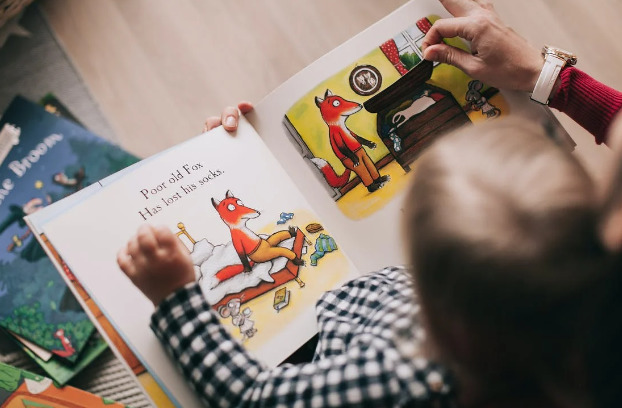
Children diagnosed with autism spectrum disorder (ASD) possess a unique collection of strengths as well as weaknesses that may influence their academic development. Studies suggest that while children and adolescents with autism are at a higher risk for literacy difficulties, some kids may also be proficient at alphabet knowledge, including reading words and phonetics. But, it is important to note that the ability to read words does not always equal sufficient reading comprehension. Similarly, children may find writing-related tasks relatively more challenging owing to wider complications associated with social communication and linguistic development.
Children with autism don’t necessarily develop early literacy skill sets at par with other typically developing kids. Although some kids learn to recognize alphabets and letters at a significantly young age, they may lack other facets of early literacy, like understanding why people write and read or figuring out the intentions and actions of various characters in a story.
However, with combined efforts from you and your child’s therapist, and with a little extra time and patience, your child can indeed make significant progress in their academics and early learning! So, in order to make your literacy journey with your little one smoother, we have compiled a list of the most common questions that parents often have, with in-depth answers by our experts –
What are some of the most important literacy skills I should teach my child?
A: While learning the alphabet and numbers is essential, your child must be familiar with fundamental, basic literacy skills in order to effectively develop reading and writing abilities to the best of their potential. These include knowing how to hold a book properly and turning pages without tearing them, speaking and understanding words and sentences using the right pronunciation, story comprehension, holding a crayon and a pencil, and writing his/her own name, in addition to the names of immediate family members. It’s also important for the child to be able to hold his attention for a brief period of time to be able to focus on the act of writing. Do not force kids to sit. You can allow them to scribble while standing. Gradually help them sit and write. Feel free to use pencil grippers to make it easier for the child. Sound awareness, such as perceiving that words can be broken down into simpler syllables and knowing that every letter has a unique and distinct sound, is an important literary element, as well.
How can I make reading time more interesting for my kid?
A: Here are some ways you can make reading or study time more interesting for your child –
- Use visual aids and structured activities
- Don’t be afraid of using props, figurines, puppets, and other objects to make those stories come alive!
- Keep instructions simple and clear to understand
- Use your voice and facial expressions to add meaning and interest
- Ask questions when reading together – for instance, ‘what do you think the bird is feeling?’ ‘what do you think happens next?’ or even ‘what is the color of the little boy’s shirt?’ are definitely some good places to start.
My child has minimal vocal skills. Is there any way I could help them read?
A: The answer is yes! Some parents presume that children on the autism spectrum who can’t speak or have minimal vocal capacities cannot possibly learn to read. However, that’s far from the truth! In fact, many children also seem to understand how to read on their own – despite not receiving direct literacy instruction. They do so in several ways, including matching sentences and words to pictures or even following written text with their finger as an adult reads to them. You can also establish pre-reading skills at an earlier stage in their life by asking your kid to point to different characters, turning the pages of books, or giving them the opportunity to pick the reading material of their choice.
Should I discourage my child from reading ‘non-conventional’ reading materials and only focus on story books?

My child refuses to write or even look at the paper. What can I do to assist her?
A: While this is a common problem experienced by parents, being patient, empathetic, and encouraging is one of the best keys to use here. Ensure that you’re not frustrated because of their refusal to interact with stationery and books. Instead, make use of visual or digital cues to help your kid better understand lines, words, and shapes. This approach not only helps them grasp the essence of making movements with a writing tool, such as a pen, stylus, or pencil but provides them with an actual purpose and end result of using those lines – such as transitioning from scribbling random lines/shapes to writing actual words. Remember, at times it really helps when the adult engages in tasks that they would want the child to do. Colour their favourite cartoon character, paint/sketch while talking about preferred themes (cars, locations, animals, zoo trips etc).
What are some everyday reading and writing strategies to use with my child on the autism spectrum?
A: Reading and writing don’t necessarily have to happen only in school or during study time at home. So, here’s how you can incorporate reading and writing into your child’s daily schedule –
- Label items present in your child’s immediate environment. For example, you can place a label that says ‘keys’ next to the keyholder or a sticker that reads ‘remote’ on the TV remote.
- Give your child easy access to paper, crayons, and pencils, so they can write or draw whenever they wish to.
- Encourage them to recognize and read words in their surroundings, such as hoardings and billboards, menu cards at restaurants, packaging labels, birthday or wedding cards, and even road signs.
- You can also ask your child to help you note down grocery shopping items, write to-do lists, and label their belongings.
Remember that you certainly do not need to wait until your child begins schooling in order to inculcate early literacy skills and interest; because the earlier you start, the better results you achieve. By pointing out printed words in your child’s daily life or by providing your child with colorful and simple reading material, you can surely take the first step towards fostering a life-long love and interest for books!
And if you require additional assistance with your child’s special academic and literacy needs, make sure you get in touch with our behavior analysts & clinicians and schedule a free consultation right here.


